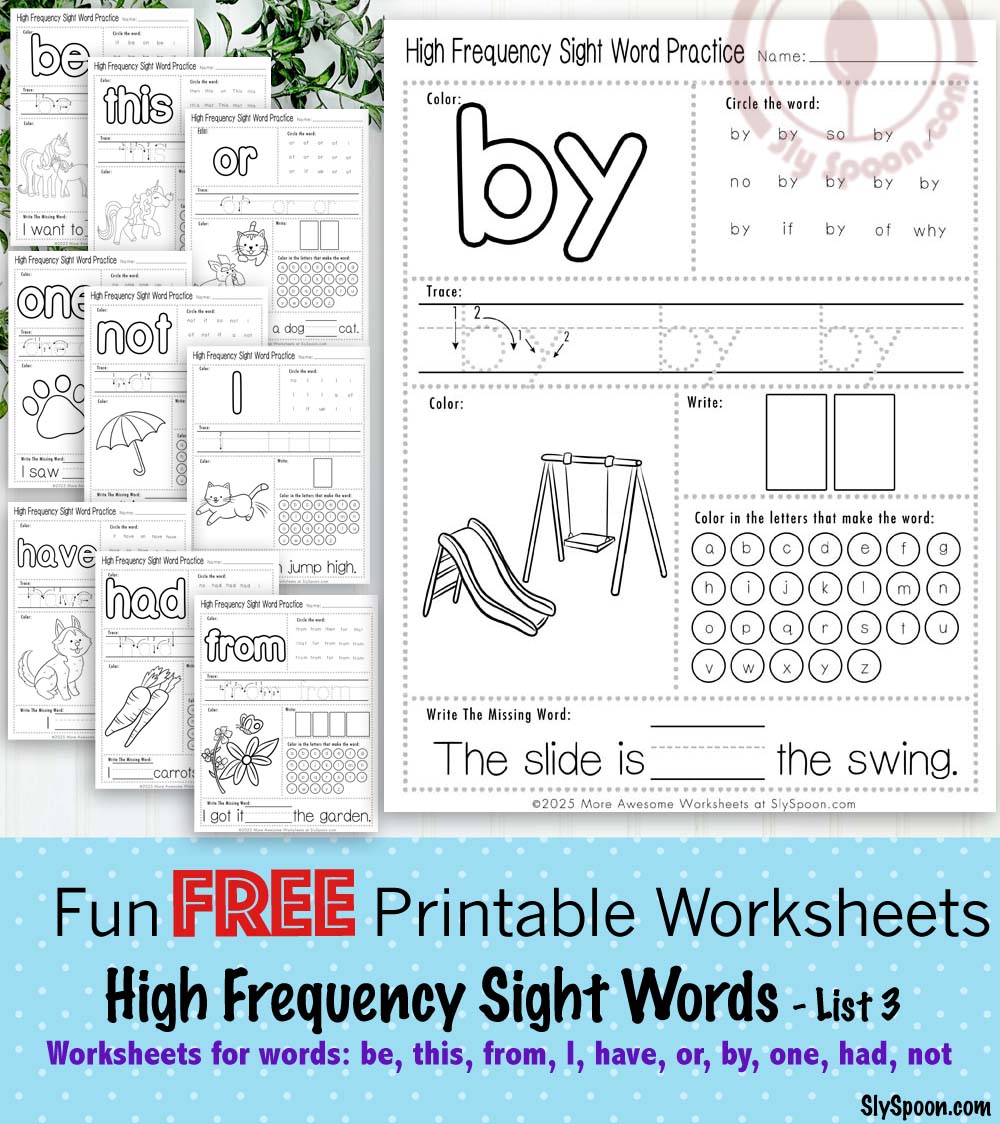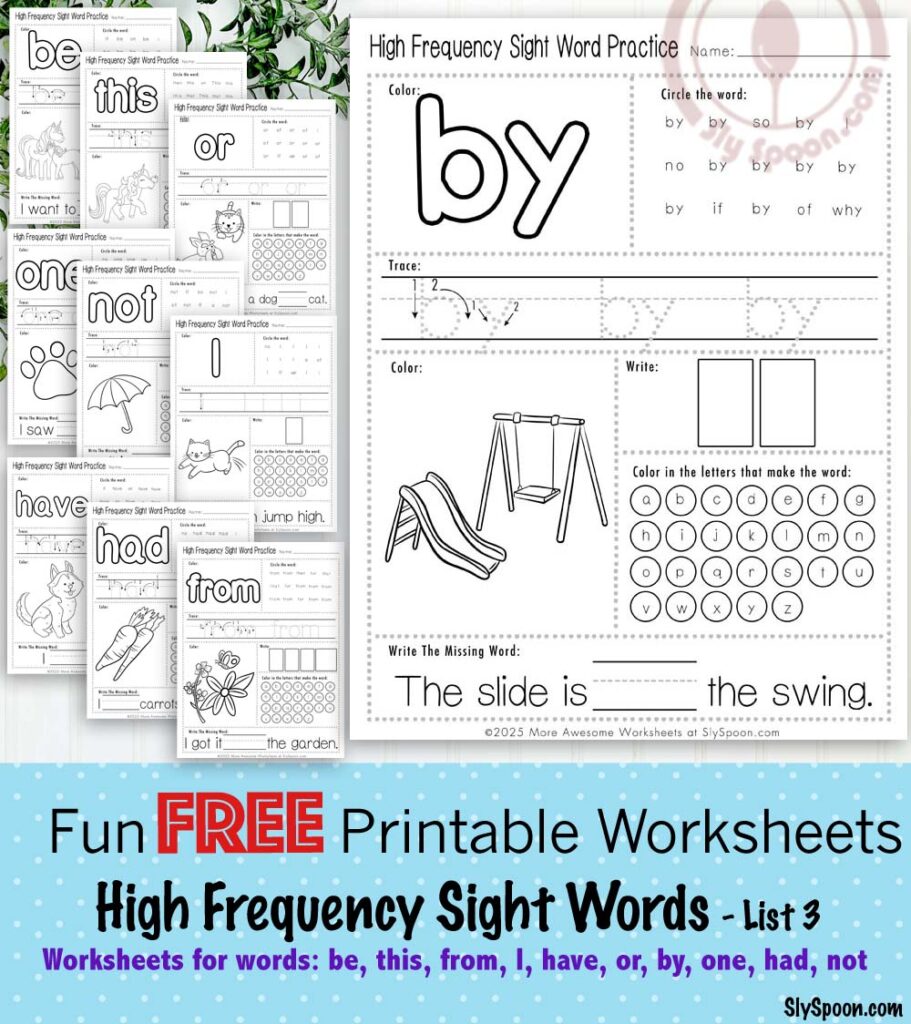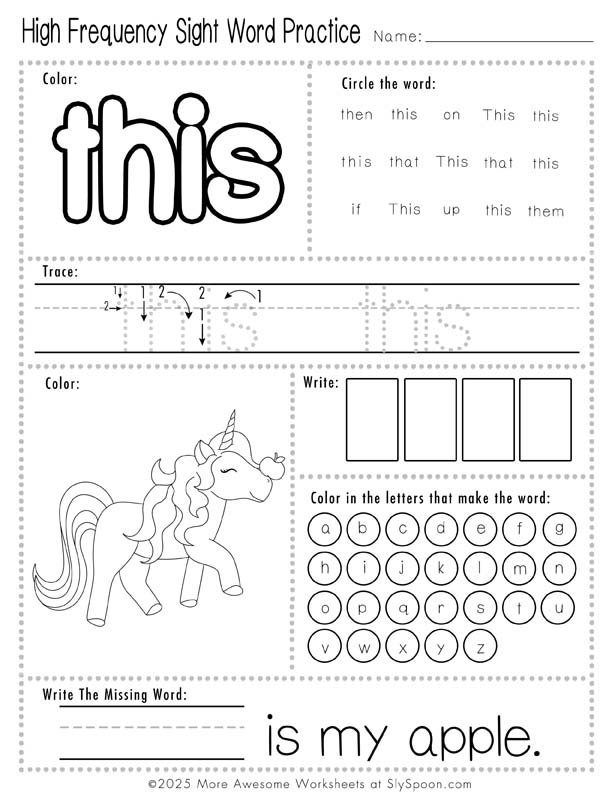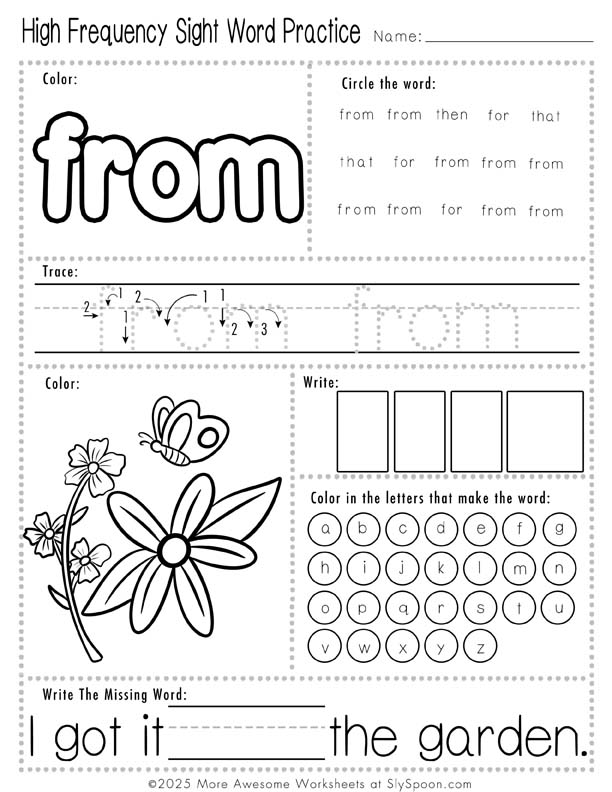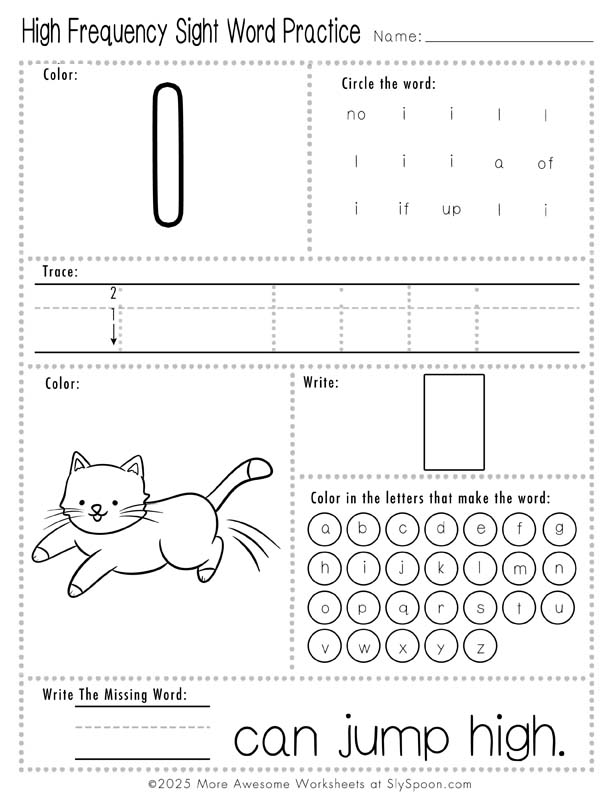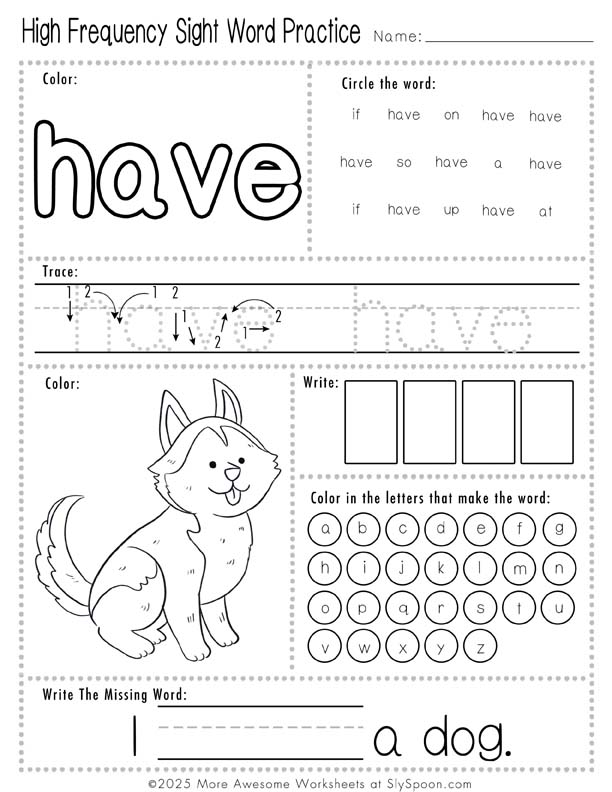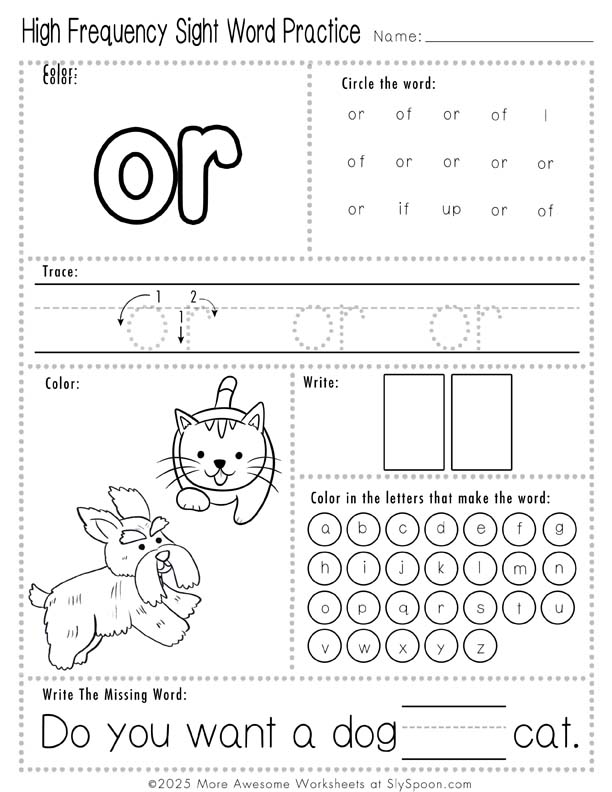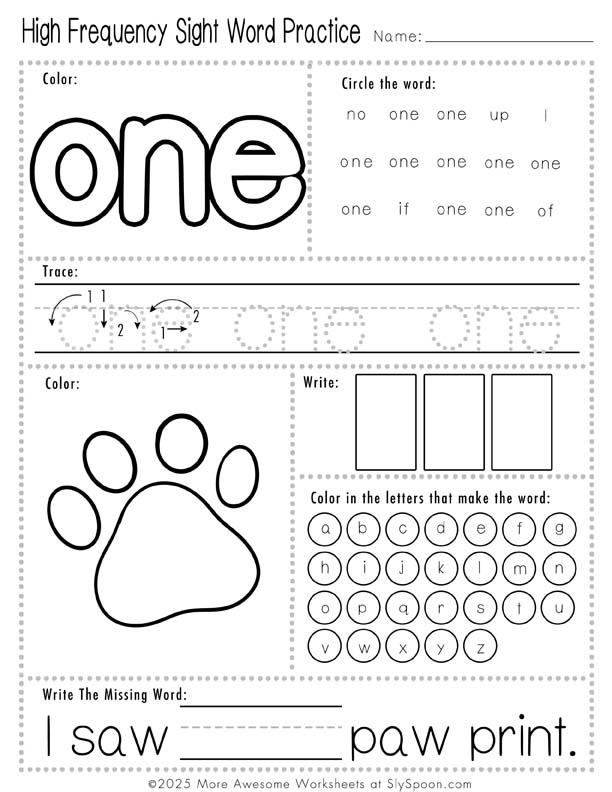This post may contain affiliate links. Read our disclosure policy.
If you’re anything like me, you’re always searching for engaging and effective materials to support your little ones in becoming confident readers. As we explore the realm of early literacy, I’m thrilled to present something amazing to you—complimentary printable sight word worksheets tailored specifically for kindergarteners and early readers!
These cute worksheets serve as an excellent opportunity to introduce and reinforce some crucial sight words for new readers. I’ve assembled a sampler pack that features a range of enjoyable activities, along with some fun coloring tasks to make learning enjoyable. This particular collection concentrates on Sight Word List 3 (3 of 10) and highlights the following essential words: be, this, from, I, have, or, by, one, had, not.
Significance of Sight Words:
- Foundation of Reading: Sight words are typically the most commonly used words in texts, establishing a base for children to begin reading fluently.
- Enhancing Fluency: Instantly recognizing sight words contributes to improved reading fluency, enabling students to concentrate on understanding instead of decoding.
- Boosting Confidence: Mastery of sight words can elevate a child’s confidence in reading, motivating them to interact more with texts.
- Minimizing Frustration: Familiarity with sight words reduces the number of words children must decode, lessening frustration and distractions during reading.
- Improving Comprehension: When children quickly recognize sight words, they can allocate more cognitive energy to grasping the meaning of the text.
Reasons for Using Sight Words:
- Real-World Usage: Sight words relate to terms children frequently encounter in their daily lives, making them relevant for early reading experiences.
- Common Patterns: Many sight words adhere to predictable patterns, enabling children to see them as a group rather than discrete, unfamiliar terms.
- Memory Retention: Regular encounters with sight words strengthen memory, aiding in automatic recognition over time.
- Support for Diverse Learners: Sight words can be advantageous for all types of learners, including those facing dyslexia or other reading challenges.
Ways to Practice Sight Words:
- Flashcards: Develop flashcards with sight words to reinforce recognition and recall through practice and active involvement.
- Games and Activities: Implement sight words in games (such as Bingo or matching games) to create an engaging and interactive learning experience.
- Reading Aloud: Encourage children to read aloud books that feature their sight words, reinforcing recognition and context.
- Writing Practice: Allow children to write sight words in sentences or stories to help them connect reading with writing.
- Daily Review: Integrate sight word practice into everyday routines, reinforcing learning consistently.
- Visual Aids: Utilize visual aids (like posters or digital apps) to ensure constant exposure to sight words at home and in the classroom.
Additional Advantages:
- Vocabulary Growth: While sight words typically encompass basic vocabulary, their recognition can lead to a wider understanding of language.
- Peer Collaboration: Facilitate peer reading sessions where students can assist each other with sight words, promoting collaboration and social skills.
- Tailored Learning: Sight word lists can be adjusted to address the unique needs of children at varying reading levels.
- Involvement of Parents/Caregivers: Engaging parents in sight word activities can bolster learning at home and create a supportive reading atmosphere.
- Tracking Development: Monitoring children’s mastery of sight words enables educators to gauge reading progress and adapt instruction to meet changing literacy needs.
Each Worksheet Includes:
- Letter Tracing: Children can practice forming each letter of the sight words accurately, developing crucial muscle memory essential for handwriting skills!
- Coloring Activities: These worksheets offer breaks from decoding by including creative spaces, adding an element of fun while promoting relaxation.
- Simple Word Writing: This exercise is perfect for refining fine motor skills. It helps kids improve their grip and control, which is critical for writing. It’s incredible how little practice can yield significant progress!
- Dot Marker Recognition Tasks: Dot markers are a favorite in our home, providing an enjoyable way for kids to engage with the words while enhancing their creativity and using different hand muscles to create colorful dots on each word, turning learning into a fun game.
- Word Recognition: Kids will dive into recognizing and reading their sight words—vital for nurturing reading fluency, and they will feel a sense of pride as they begin to identify these words.
Free Printable Sight Word Pages:
Sign up for my Newsletter to access more free, themed tracing worksheets and letter play activities from my extensive collection.
The best part? All these worksheets are entirely free for you to download and print! I can’t emphasize enough how invaluable it is to have ready-to-use resources that turn learning into an interactive and enjoyable experience. Whether you’re a homeschooling parent or a dedicated educator, these worksheets will undoubtedly be a great asset.
So, are you prepared to assist your child on their reading journey? Download these free printable sight word worksheets and watch as their little faces light up with excitement and accomplishment.
